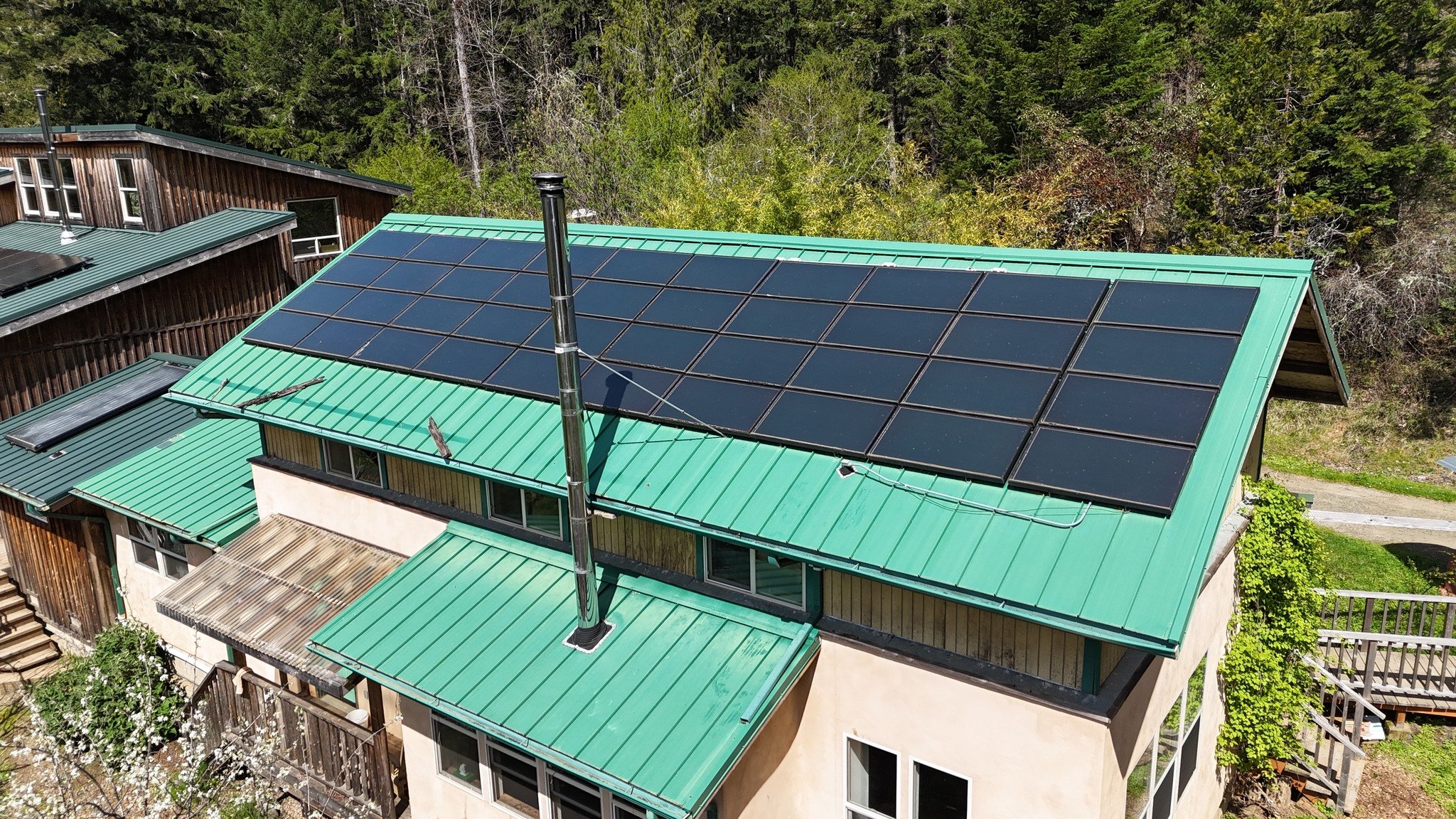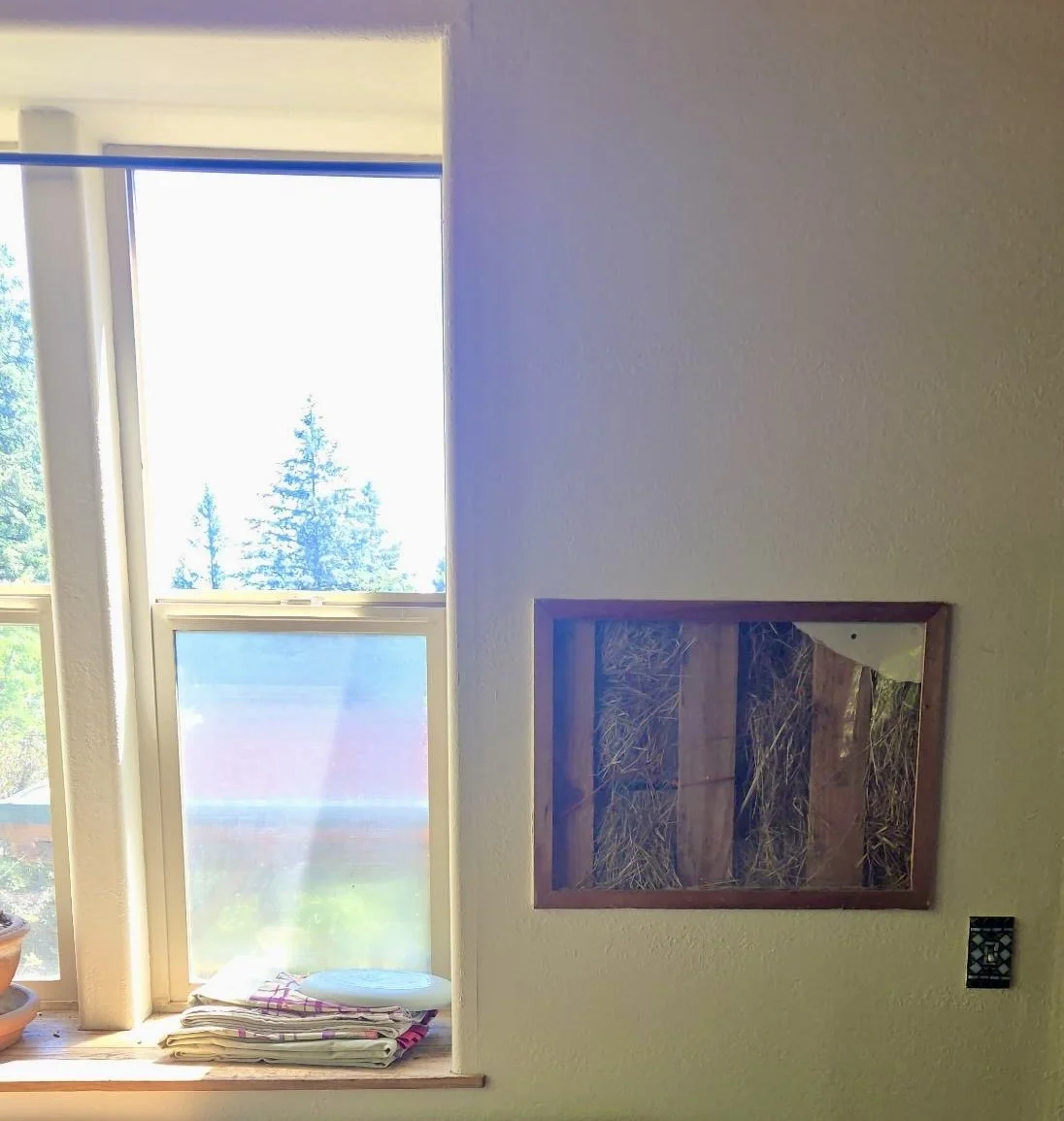
Our Sustainable Campus
The Center for Rural Livelihoods’ campus is located on 40 acres of diverse forest and open woodlands. Ponds and flowing waterways support healthy riparian forest and wetlands on the site and biodiverse gardens and agroforestry systems start in the heart of campus and blend with the forested landscape. We are honored to steward this land as a learning and demonstration site for our region. For more than 40 years, the site has been maintained as a model for sustainable human settlement in the forested foothills of our inland valleys. Since its inception, CRL has experimented with, practiced, and promoted strategies in construction, technology, forestry, agroforestry, and ecological restoration to promote regional solutions that are both ecologically based and economically beneficial. A handful of these projects are highlighted below.
Natural Building
CRL demonstrates the use of natural building materials such as earthen plasters (typically clay and sand mixed with straw or other natural fibers). We utilize site-sourced clay, round poles, timbers, stones, and other readily available materials in our natural building projects, which have included permanent houses, tiny homes, and glamping platforms. Learn more about natural building here.
Cob Building
The first Cob building in North America was built on CRL’s campus in the 1980s. Cob is a sustainable, affordable, freeform building material made from subsoil, water, and straw or other natural fiber. Aprovecho’s co-founder, an innovative builder, went on to start the Cob Cottage Company. While CRL’s original cob structure no longer exists on campus, its influence remains visible through our other natural building projects and earthen, natural building experiments.
Straw Bale Insulation
Built in collaboration with the University of Oregon in the 1990s, CRL's main building (affectionately termed "The Straw Bale") was the first straw bale insulated building in Oregon. Highly effective and affordable, straw bale is also a renewable, biodegradable, and energy efficient insulation material.
Small-diameter Poles as Studs
CRL prioritizes fuel reduction and ecological restoration in our campus buildings. Our Community Meeting Hall's wall studs were constructed with flat-sided small diameter poles, utilizing otherwise combustible material and increasing the embedded carbon stored in the building. The innovative use of flat-sided poles was integrated into Lane County building code as a result of its experimental use on the CRL campus.
Hydrology
For decades, CRL has been experimenting with novel techniques for hydrological management, including collaborations with the USFW in creek restoration, water catchment, grey water, swales, and pond placement.
Pond Construction
Pond Layout and Location Options
Integrated Water Harvesting Earthworks, Restoring Ecosystems
Solar Panels
CRL’s first array of rooftop solar panels were installed in 2001 and were producing approximately .5kwh by 2024. A new array that was installed on another building in 2024 (thanks to EPUD’s Green Grant program) is now producing up to ~11kwh.
Permaculture Garden and Orchard
Permaculture has been a key focus of the Center for Rural Livelihoods from the beginning – our garden and orchard were designed for sustainability and harmony with the local ecosystem. Permaculture design mimics nature’s patterns and draws on multiple disciplines and techniques, including agroforestry, woodlot and water stewardship, integrating animals and living systems, and much more.
CRL’s 1-acre organic garden serves as a valuable resource for fresh food, education, and community building; we also maintain orchards of varying ages (ranging from newly planted to 40 years old) throughout our 40-acre campus.
Rocket Stove
The rocket stove, a highly efficient and typically portable wood-burning stove, was originally developed at the Center for Rural Livelihoods – then called Aprovecho. In 2006, the stove department spun off its own nonprofit and incorporated as the Aprovecho Research Center; that organization continues to operate under that name and focuses solely on combustion research.
Silvopasture
Silvopasture integrates trees, livestock, and pastures to create positive ecological impact and mutually beneficial results for trees, plants, and animals. CRL is home to a rotational grazing project that integrates sheep in our forest lands; sheep clear understory vegetation, provide natural fertilizer, and help foster a biodiverse and more resilient landscape.
Medicinal and Culinary Herbs
CRL’s land and garden support many wild and cultivated medicinal and culinary herbs, such as Oregon Grape (a plant with antimicrobial and anti-inflammatory properties), rosemary, oregano, and many others that can be utilized to develop herbal tinctures or as natural health remedies.
Ecoforestry
Ecoforestry is the practice of maintaining or restoring a forest to the level that it can be sustainably harvested. CRL engages in ecoforestry by selectively thinning trees and managing our forest towards old growth characteristics while utilizing it for lumber, firewood, and materials for beaver dam analogs.
Research
The Center for Rural Livelihoods has long been a hub for forestry research in the Pacific Northwest. Over the decades, projects have involved multiple stakeholders and have, since 1990, been primarily led by our foresters Matthew Hall (1990-2008) and Abel Kloster (2008-present). Currently, we have agroforestry projects sponsored by the Western Sustainable Agriculture Research and Education (SARE) section of the USDA. Learn more here.






